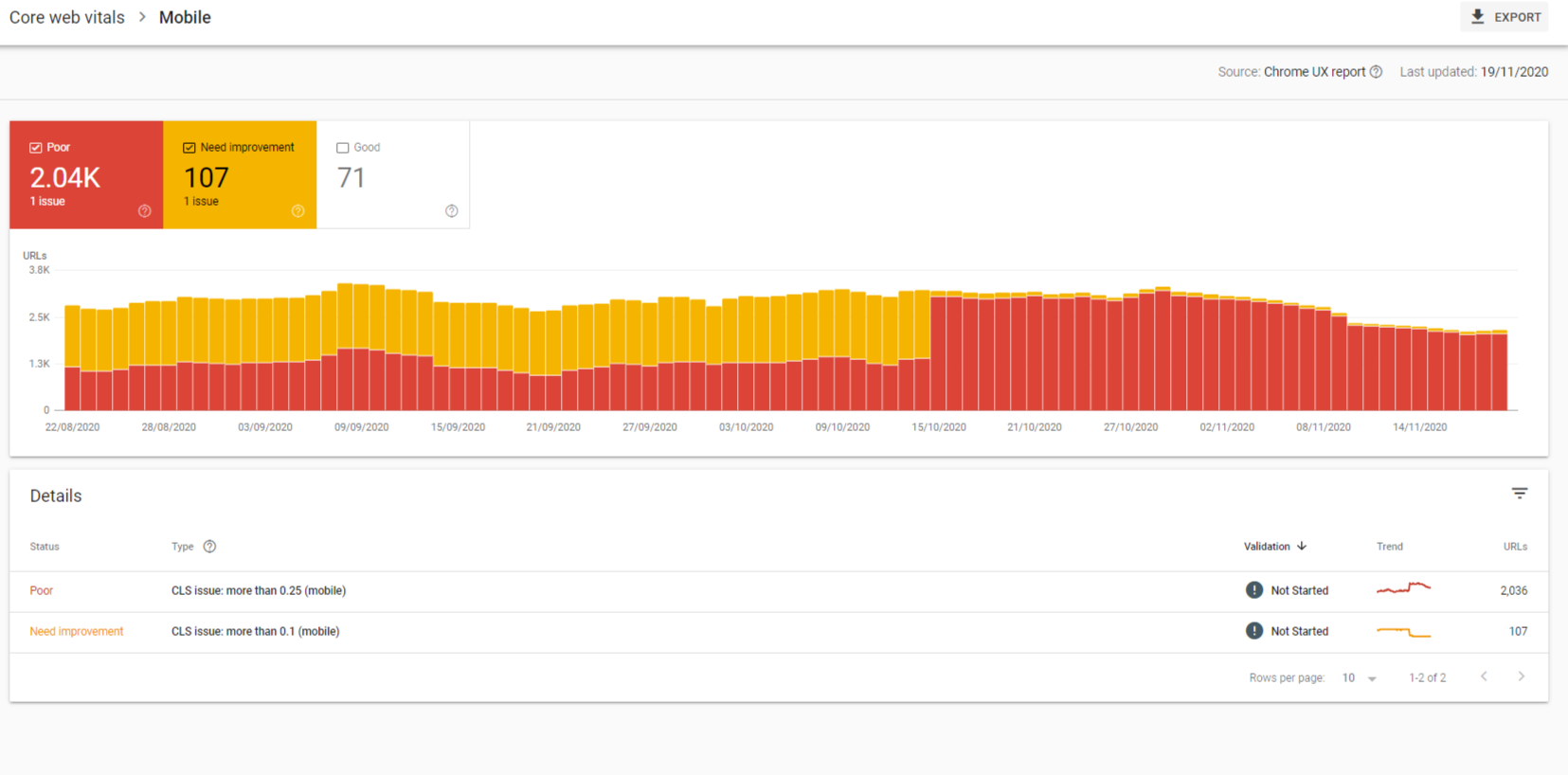Google first introduced us to the concept of Core Web Vitals in May 2020 – announcing that they would become part of the search algorithm in the future. Google has now confirmed that these will be introduced as part of the algorithm from May 2021.
So, what are the core web vitals?
Anyone who has been following Google Search over the last 5 years or so will not be surprised to learn that core web vitals are all about the User Experience (UX) and the page experience score that Google provides.
Google continues to strive to provide the best web that they possibly can for users, and this latest announcement follows in the trend of mobile first indexing and page speed ranking factor.
Core Web Vitals measures 3 metrics which are:
- Largest Contentful Paint (LCP) – LCP measures loading performance and a good LCP will be under 2.5 seconds
- First Input Delay (FID) – FID measures the interactivity of the page – FID should be less than 100 milliseconds
- Cumulative Layout Shift (CLS) – CLS measures visual stability – a good score will be a CLS of less than 0.1
Each web vital will grade web pages on 3 outcomes – Good (passes), Needs Improvement and Fail
Thankfully Google have provided users several tools to measure the 3 core web vitals including:
- Google Lighthouse
- Google Page Speed Insights
- Google Search Console

What kind of impact these new signals will have on rankings is anyone’s guess at this stage, however these 3 metrics are also likely to impact on the overall UX of the website. They could affect website usage and conversion rates so paying attention to them would be strongly recommended.
We do know that content remains the most important thing for Google in ranking so just improving your Core Web Vitals won’t be enough to get you ahead of your competitors if your On Page content and SEO is weak however if your content is on par with others then improving your core web vitals could make the difference between position 1 and 2.
You will find that if you are using a website which makes use of various templates that any issues you encounter will likely be replicated across all pages which use that specific template. This means if you have thousands of errors reported in search console it may not be as big a job to fix as you think.
What does this mean for cinemas?
So, cinemas will have to pay attention to these metrics and should begin planning for any improvements required ahead of May.
Some of the early issues which we have encountered on cinema websites include:
- CLS issues arising as a result of API calls for movie listings
- CLS issues with session pickers
- LCP issues from images in banners being too large
- LCP issues from external images like movie posters loaded at a size which is too large
Core Web Vitals are now just a few of the hundreds of signals which Google is looking at when deciding to rank a website, working alongside an SEO who understands search ranking and how to improve it is becoming more critical as the algorithms get more complex and search more competitive.
The Boxoffice Company would love to have a chat with you around your experience with search marketing and how we can potentially improve your position to earn you more traffic and ticket sales. Get in touch with Boxoffice at info@boxoffice.com or find out more about our SEO service.
